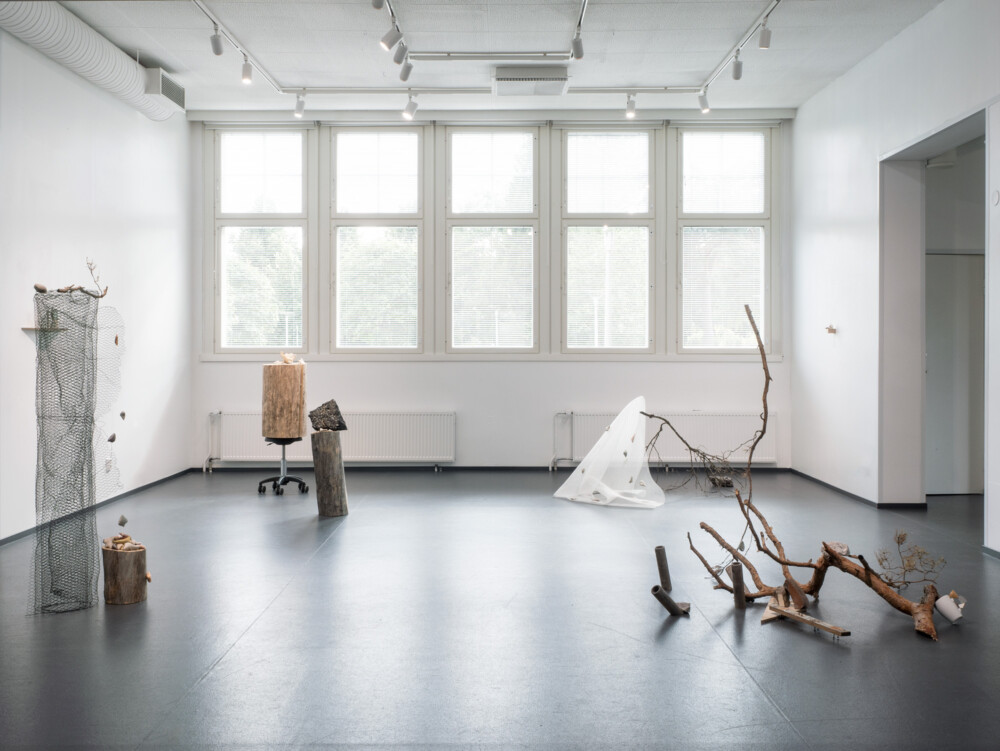
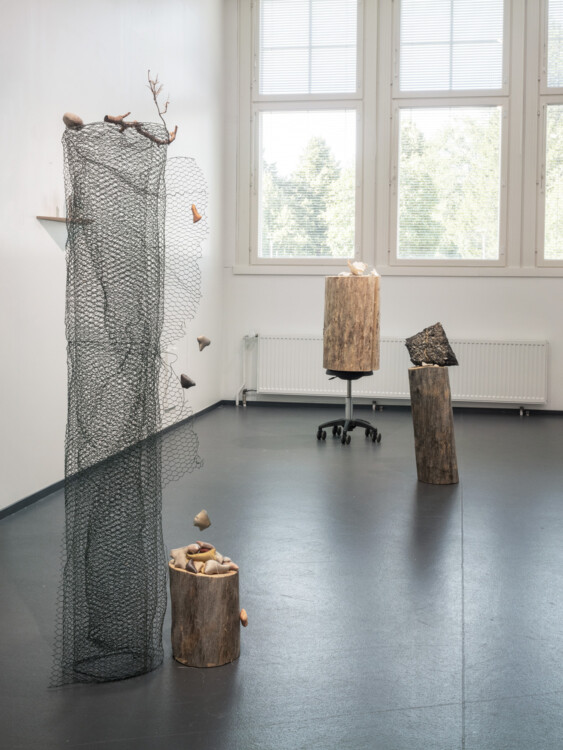
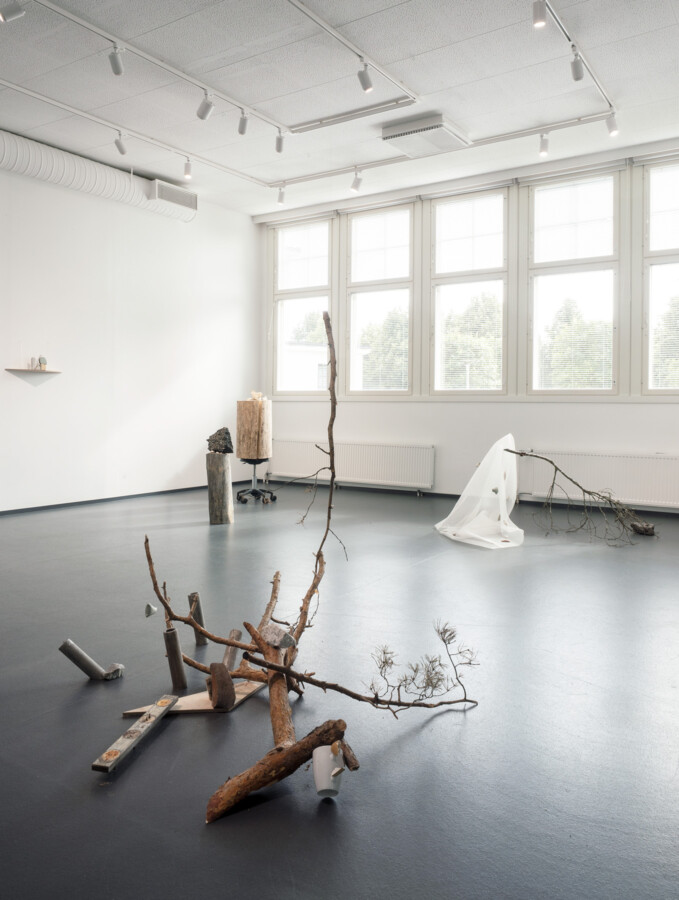
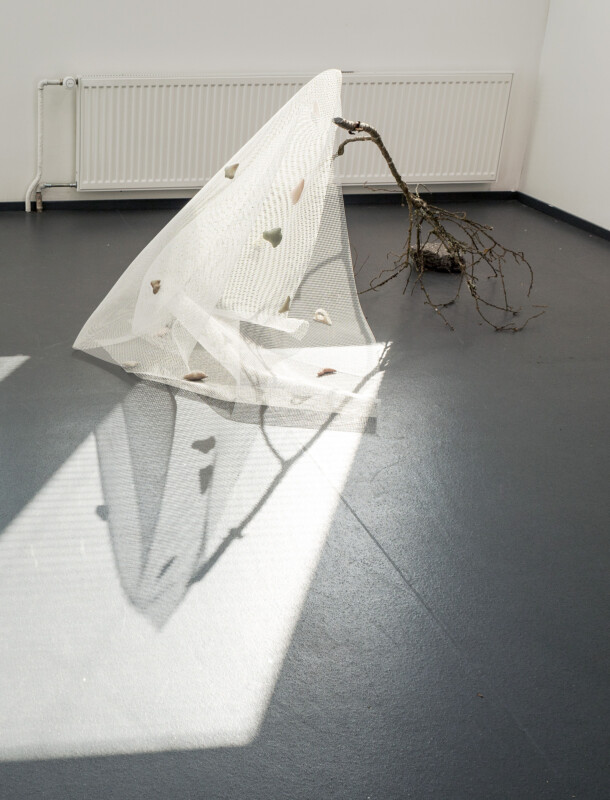
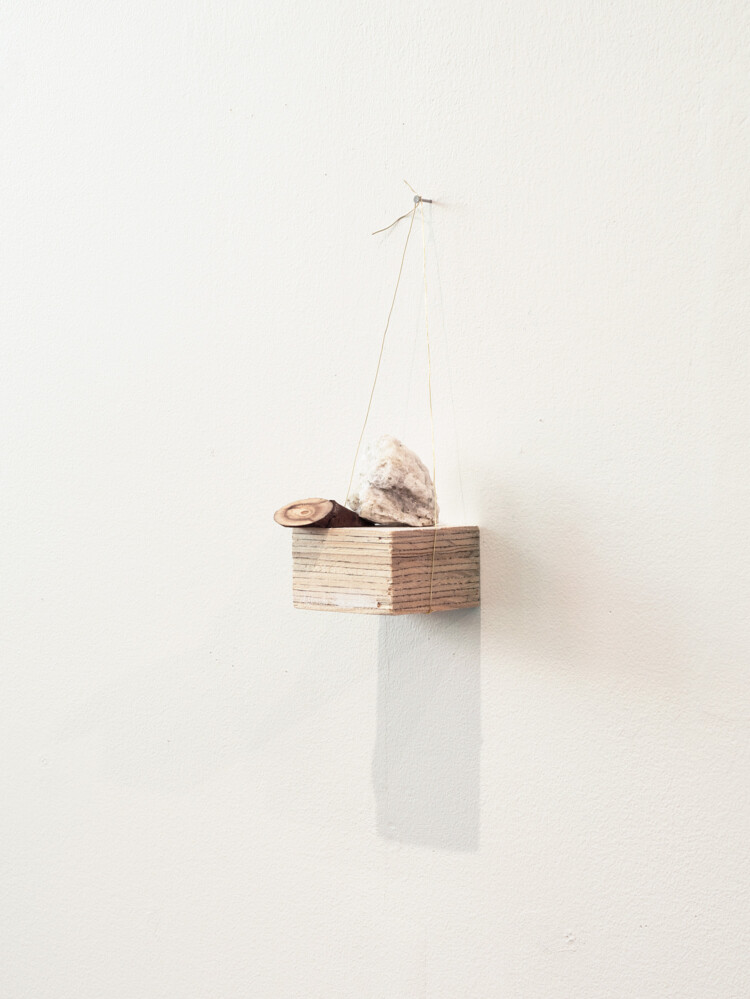
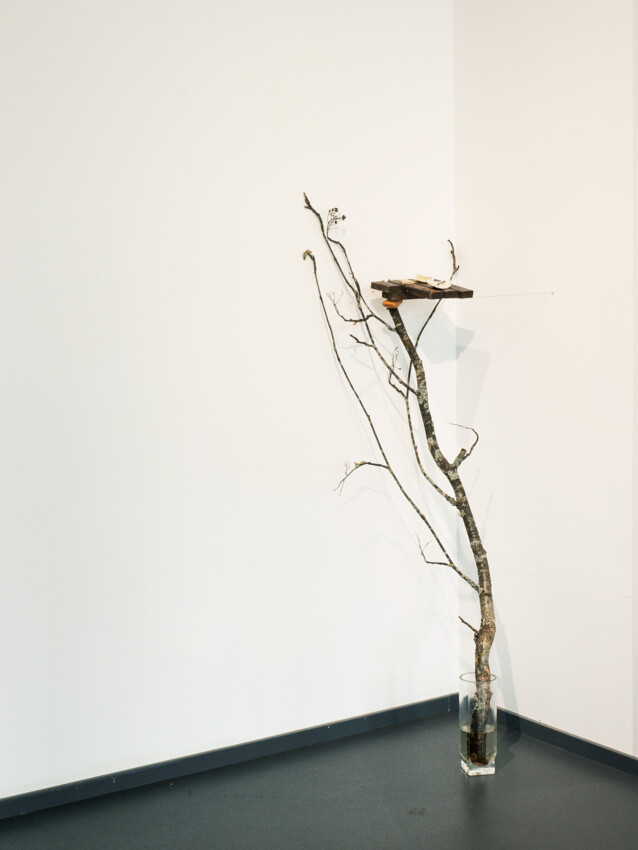
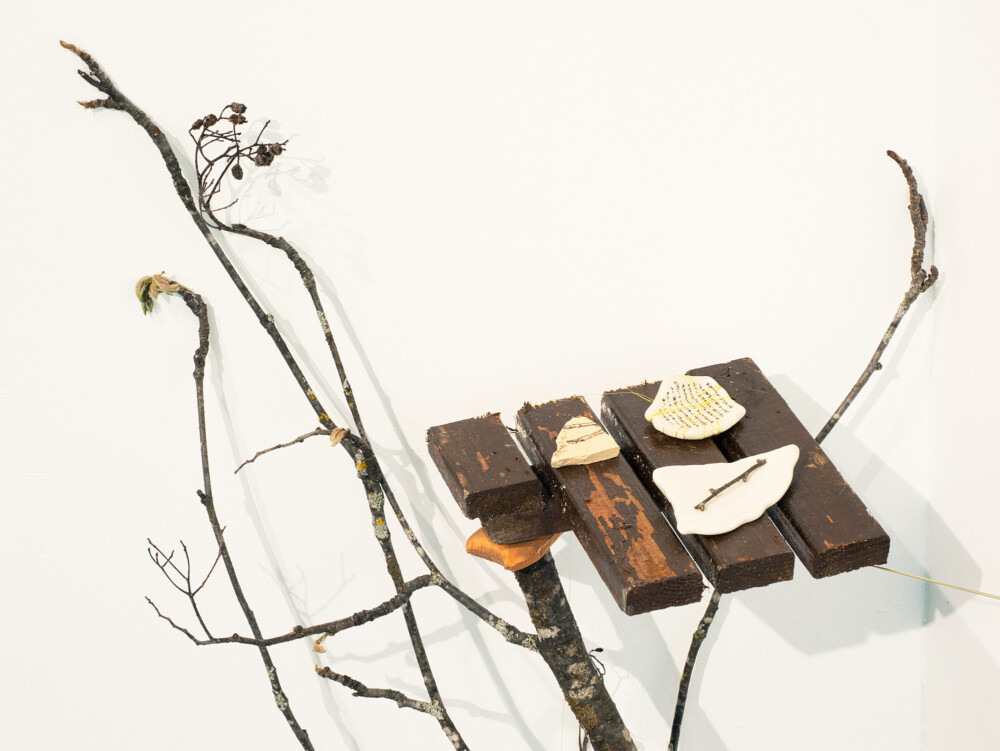
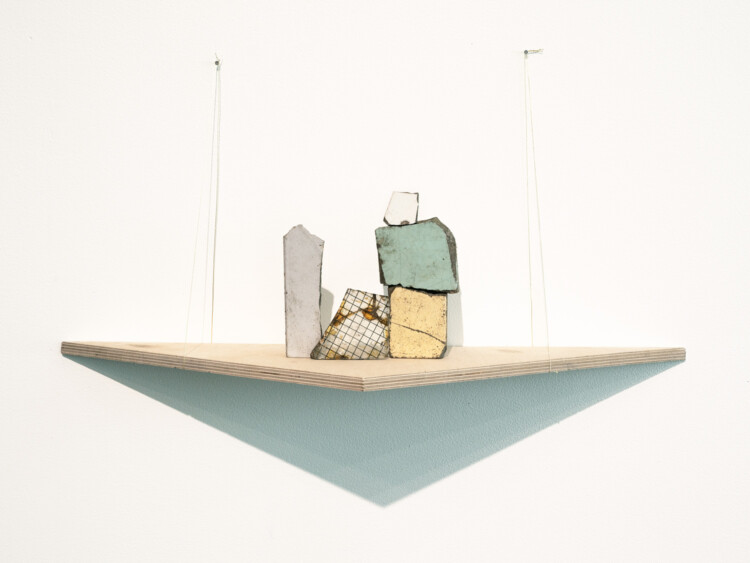
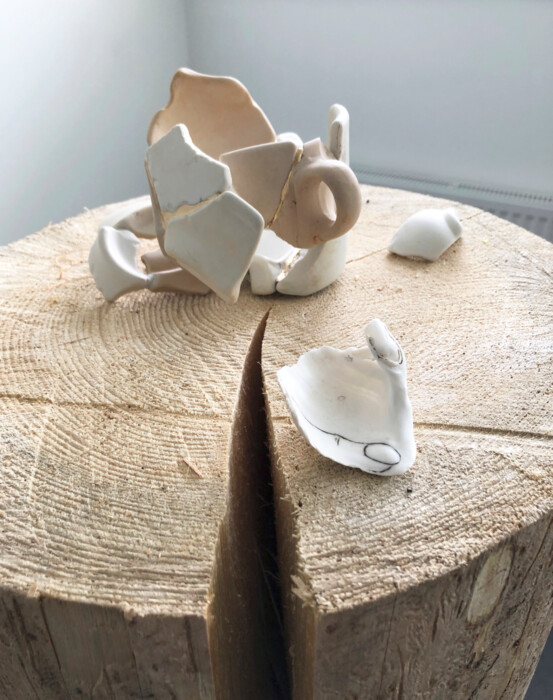
Piling stone
2022
Wood, ceramic, tile, shell, Urushi lacquer, wire, asphalt, stone, cloth, net, etc.
Serlachius Residency Gallrey









2022
Wood, ceramic, tile, shell, Urushi lacquer, wire, asphalt, stone, cloth, net, etc.
Serlachius Residency Gallrey
Piling stone
Cairns are everywhere in the world where they should be. Especially in Japan, we often see them at shrines, temples, and sacred sites. They are mainly memorials for those who have died. However, the act of piling stones has been practiced before Buddhism and even outside of religion. The act of piling stones has been practiced since the primordial era thousands of years ago.
On the summer solstice June 21, I went on a night hike with Caroline to Rasuanniemi, an esker peninsula. It was a 40-minute hiking course and also a historic place with ancient ruins of Stone Age dwellings. I found some relatively new cairns off of the course in a place that had nothing to do with the information board about ruins. It was probably something left by a hiker who came recently. Looking at them, I could easily imagine that humans thousands of years ago would have done the same thing, and I became more and more interested in cairns as a primitive fundamental and unchanging behavior (act).
As I researched about cairns, they were used in rituals to contain the dead, also as a signpost, a marking, a greeting, and a mysterious behavior (act). A cairn has various meanings and motives (and various meanings and motives are hidden).
It is a simple act to pick up, stack, and repeat. Why do people pile up stones? I think about the origin of the act of piling stones and continuing to make my work as if piling stones. It is always next to collapse.
Cairn — a small pile of stones made, especially on mountains, to mark a place or as a memorial (= an object to make people remember someone or something) Cambridge Dictionary. (n.d.). 2022
https://serlachiusresidency.fi